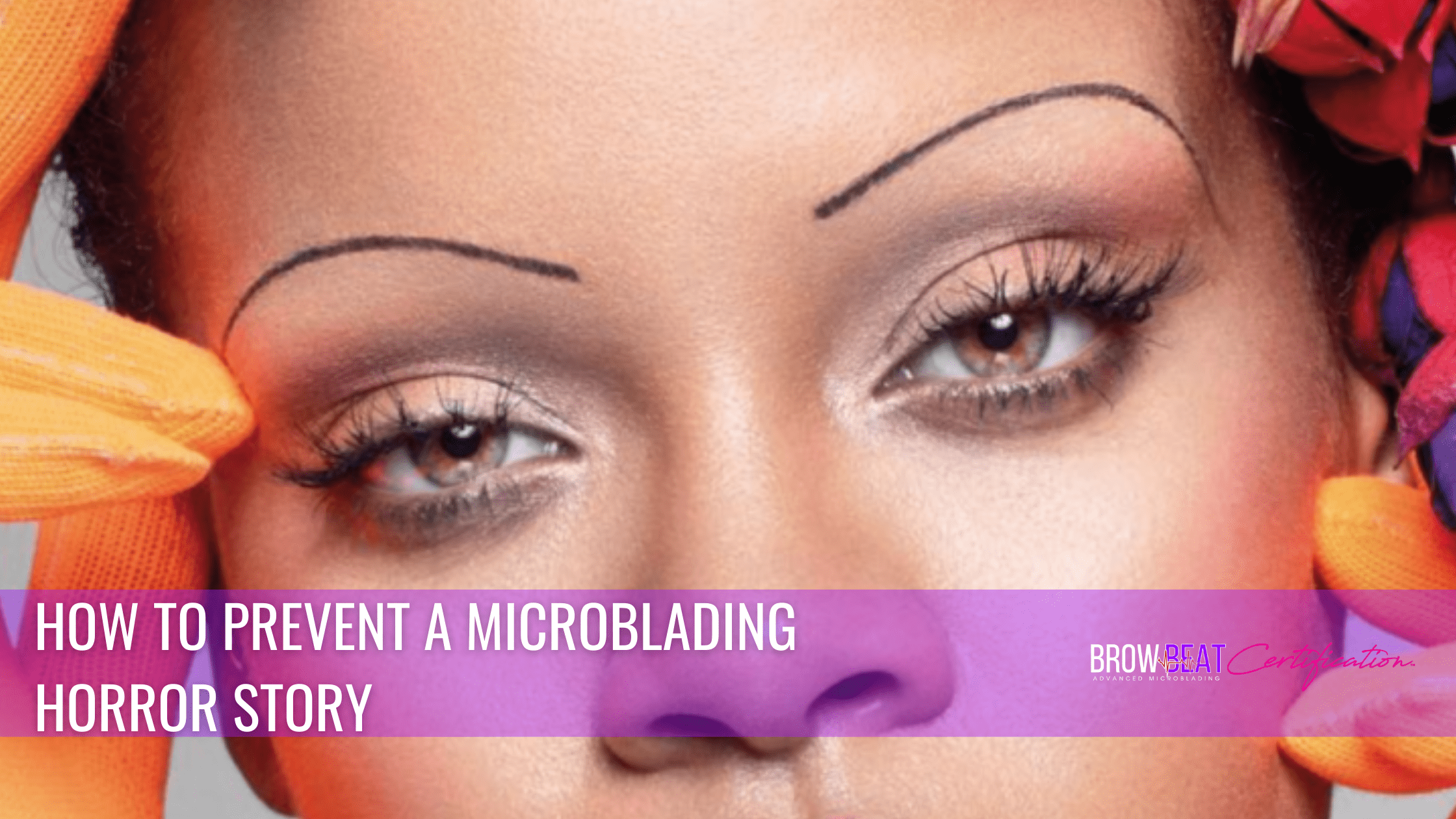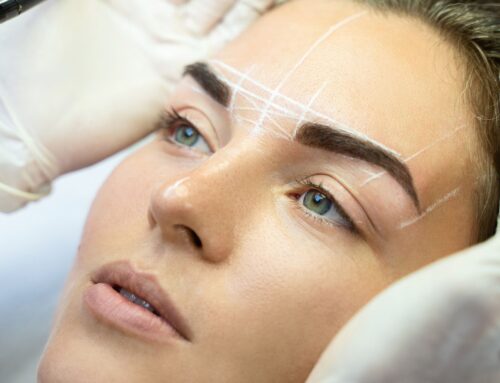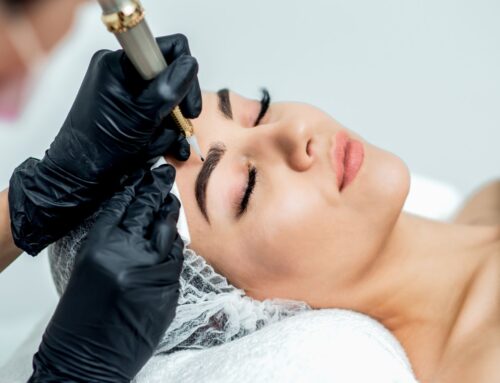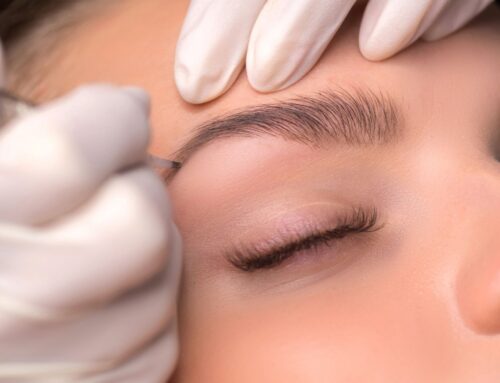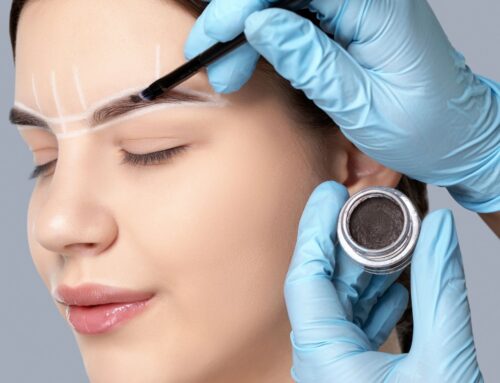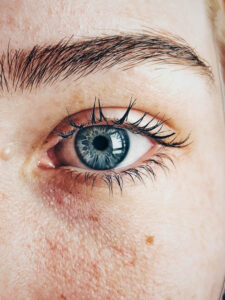
Why are there so many microblading horror stories out there?
How to Prevent a Microblading Horror Story: 2-Day Training Debunked
One of the things that make some people skeptical about microblading would be the horrifying microblading stories they find on the internet. And if you are an artist practicing this craft, the worst thing that can happen to you is to be the villain in such a story. Hence, in this article, we’ll give you a glimpse of the 2-day microblading training and tell you everything you need to know to prevent these microblading horror stories.
The Client Should Be Suitable for Microblading
Not everyone can get microblading. Those who have a medical condition that causes them to bleed easily or those who take regular blood-thinning medications, may not be good candidates for microblading. It’s advisable for these people to seek other solutions or methods to get their desired look of fuller brows.
In addition, there are certain medical conditions that can make people more susceptible to infections. Letting the client know about it beforehand will prevent a horrifying microblading experience.
Let’s have a look at the following qualifications to know if the client is suitable for the miracle eyebrow procedure:
- Make sure that the client is above 18.
- The client should not be pregnant or breastfeeding.
- The brow skin should be free from sunburn, rash, severe acne, keloid scars or active skin cancer.
- A client should have no previous allergic reactions to makeup or tattoo inks.
- The client should have no diabetes or anemia.
- The client having epilepsy and getting microblading is not a good idea.
- The client should be free from thyroid medication, blood thinners, heart or stroke medications, Accutane, or steroids.
- A client that recently got botox, fillers, chemical peels, laser treatments, or other cosmetic procedures in the facial area should refrain from getting microblading.
Furthermore, the skin should be free from post-inflammatory hyperpigmentation, transmittable diseases such as HIV or Hepatitis; blood clotting disorders, hemophilia, or healing disorders.
If you want these microblading qualifications explained to you better, you can always visit this article.
The Client Should Be Completely Aware of the Microblading Procedure
The most common reason for a microblading horror story is the lack of communication and understanding between the artist and the client. Explaining the procedure to the client would prevent a horrifying microblading experience and any conflicts that may arise during or after the procedure.
Before an appointment, the client should know microblading is a semi-permanent makeup technique and it’s not possible to get rid of it entirely. The client should also be aware that the end result may vary depending on their skin type, lifestyle, and body chemistry.
Most importantly, they must be aware that botched microblading procedures cannot be easily reversed with laser treatment, chemical peel, or dermabrasion. The color will fade over time but can last for years with proper care.
The microblading process should also have at least two sessions, so the client can have their brows done thicker or have them tweaked during the second session.
If you want to be more familiar with the process, you can click this link for an overview of the microblading procedure.
The Microblading Artist Should Get Complete Training and Legal Certifications
Microblading is nothing like applying eyeliner or doing eyebrow tinting where anyone can do it. It is a complex procedure based on the artistry of the artist and the client’s skin type. Like any other tattoo, it should be performed by an experienced professional. This is to avoid infection and to prevent a bad microblading experience.
Let’s discuss how you should undergo proper training as a good microblading artist!
Buying Complete Tools and Watching Online or Live Tutorials Is Not Enough
Anyone can watch a live model being microbladed. All you have to do is type that into YouTube, or simply view this video. This may be tempting if you are trying to start working quickly. But, is it worth it if you are unable to produce quality work and end up going out of business after just a few months?
You’ll never want to be the monster in a microblading horror story. So, you will need additional support, training, and guidance to become a great artist with industry-staying power.
Nevertheless, you’ll still need a complete set of microblading tools before learning the craft. And if you’re not quite sure about the things that must be in your microblading kit, just visit this article.
The Certification after the 2-day Course Is Only a Mentorship’s Requirement
With the recent boom in permanent cosmetics, there are microblading horror stories flooding the Internet. But why are there just so many of them?! Well, here’s the reason: BECAUSE SO MANY TRAINING COURSES IMPLY THAT YOU CAN LEARN HOW TO MICROBLADE IN JUST TWO DAYS.
We’re here to tell you that this is actually NOT TRUE!! We can agree that microblading is an advanced skill that actually can be learned at a fast pace. However, learning how to microblade after 16-20 hours is what you will get with a training program that only includes a two-day workshop!
There is simply far too much information to cover on a weekend! Students will need to practice and hone their skills to prevent a horrifying microblading experience for their future clients. It is this practice and also structured lessons that will make a good student become a great artist.
At Least 6 Months of Support and Mentorship Is Necessary
Reputable microblading experts don’t just push trainees out into the world after a measly 2 days, completely on their own. Oh nooo, trainees need SIX MONTHS, that’s right! SIX MONTHS of support and mentorship, which would prevent a bad microblading experience.
During this time, the artists will have the experts at their disposal for any questions that may arise. And not only that! You also get access to extensive video training tutorials! Plus, you’ll be rigorously tested in both theory and practice BEFORE spreading your wings and tackling this challenging yet rewarding work.
The Microblading Artist Should Build a Portfolio from Reputable Internships
Microblading is much more than just making strokes on the skin in a set pattern. Students must learn how to communicate and educate their clients. This must be inclusive of everything from contraindications to aftercare during their treatment and to handle each new problem as it arises. That’s why mentorships are there.
And if you’re still hesitant about these, let’s discuss what can happen after dedicating yourself to learning microblading.
Building a Portfolio Is Possible During the 6-month Mentorship
Showing your portfolio to your potential clients is essential. Your clients are either going to have never had their brows microbladed before, or they are coming back again for more. So if you have no prior experience in microblading, then you’ve got a lot of homework! You better work on your portfolio before you can convince anyone that your work is better than anyone else’s.
The only way to gain this experience is through reputable internships, which means going with a mentor. So, be prepared for it to take at least as long as the six months of mentorship!
The Whole Mentorship Period Would Include a Professional’s Guidance
To prevent a horrifying microblading experience, students will come with hurdles and problems to overcome while progressing through their studies. For example, here at BrowBeat Microblading Training and Certification Academy, we give our students the knowledge and confidence to overcome each conflict as it arises. We teach them how to problem-solve through each individual situation and bring out the best outcomes possible.
Consistent Results Are Only Possible with Continuous Work During and after Mentorship
Real learning is understanding the art of the skill. And once you do, you must be consistent 100% of the time before you will be ready to work on actual clients or on live models. Perfection is important but consistency is also key.
Additionally, when you’re learning a new skill, you must understand all of the different variables or nuances. There are all sorts of troubleshooting issues you must be prepared to deal with, as you will encounter these all at some point!
You Can Ask Questions During Mentorship
What should you do in the case of excessive bleeding or lymph production? What if your client had a botched microblading or tattooed brows and you need to camouflage and cover them? What should you do if your client has low retention after the first treatment session? What is and isn’t normal during healing? And so on and so forth.
These are just some examples of the detailed and nuanced issues you will need to be prepared for through extensive theory work and of course, through practice!
And why is this so important to prevent a bad microblading experience? Because your skill must be adjusted to account for all these variables. Being able to adjust, absorb and adapt to every new situation is what will make you a great artist.
The Microblading Artist Can Receive Feedback and Reviews from past Clients
Feedback and reviews—they are the ones that really convince clients to take the plunge and trust you to do something so permanent on their face. During the mentorship period, your mentor can give you a critique of your work aside from the in-class feedback and what you see in a mirror.
There would be plenty of opportunities to reap benefits from having an internship with a reputable microblading artist. Having references from actual clients with whom you have had contact is the best way to back up your credibility as an artist. That way, you can help prevent a botched microblading experience for your future clients by letting your past clients discuss your expertise.
Microblading Horror Stories Are There, but You Can Prevent Them and Be the Heroine
You wouldn’t be reading this article if you don’t care about your future clients. And that’s the first step for you to recognize your ability to prevent these microblading horror stories from happening.
So don’t sell yourself short at the beginning of your microblading career. Put yourself miles ahead of your competitors by getting certified with BrowBeat microblading training and certification.
Registration is ongoing and new classes are starting all the time! Learn from home at your leisure and convenience, allowing you to continue working at your current job, finish school or be home to tend to your young family!
We Are Here to Help!
No matter what your situation, BrowBeat Microblading Training and Certification is the right answer for you! Your future clients will thank you! Let’s end this botched industry trend together with quality education, creating quality artists every woman can trust!
BrowBeat Studio Dallas Microblading Certification and Training Academy
500 Exposition Ave
Suite 210
Dallas, Texas 75226
Phone: 214-431-5939
More like this:
7 Helpful Ways On How Tattoo Artists Make Money
8 Business Hobbies + Making Money From Doing What You Love
10 Money-making Hobbies For Retirees For Aggressive Income
Live Or Online Microblading Training? Let’s Compare
6 Steps To Find Natural Eyebrow Shape
Microblading Training Kit: A Comprehensive Guide
If You’re A Salon Owner, Get Microblading Training Dallas Immediately
Take microblading course in Dallas
Esthetician? Make Twice as Much by Doing Half the Work!
Microblading Training Certification: The Complete Journey
Are you working as a Registered Nurse Injector and looking to add more money to your income?
You can also read through our Client Feedbacks here.
[/fusion_text][/fusion_builder_column][/fusion_builder_row][/fusion_builder_container]

